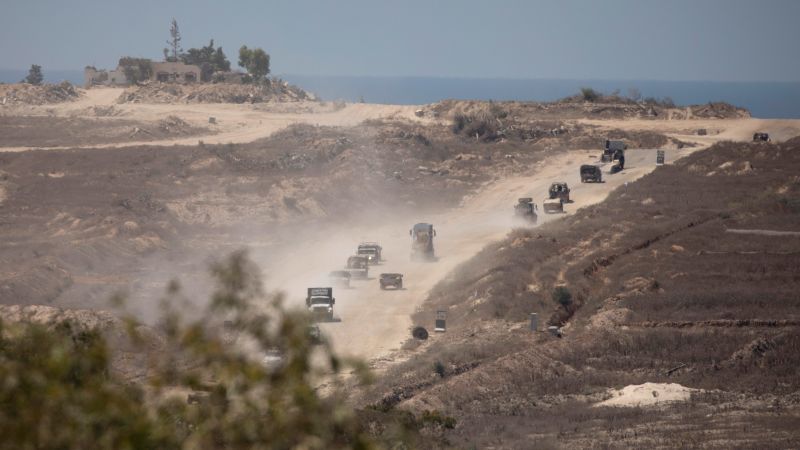A prospective hostage and ceasefire agreement between Israel and Hamas is 90% completed, but disputes remain over the exchange of prisoners for hostages and the redeployment of Israeli forces in Gaza, according to a senior US administration official.
US officials, with Qatar and Egypt, have for months worked to broker a deal to bring an end to the nearly year-long conflict. Those negotiations have taken on new urgency following the killings of six hostages held by Hamas in Gaza.
The official offered one of the most detailed looks yet at key elements of the negotiations, which spokespeople for the US government said they would not negotiate in public. The official offered the previously unreported details after repeated public statements by Israeli Prime Minister Benjamin Netanyahu casting doubt on his potential willingness to accept a deal, despite claims by the US that he had agreed to a “bridging proposal.”
The agreement itself makes no mention of the length of the Egypt-Gaza border known as the Philadelphi Corridor, the official told reporters on a call on Wednesday. Netanyahu has held two news conferences this week to argue that maintaining permanent control of the corridor is vital to Israeli security.
“The first war goal was to destroy Hamas’ military and governing capabilities. The second was to free our hostages, and the third was to ensure that Gaza never again poses a threat to Israel. And all three of those goals – all three of them – go through Israel’s control of the Philadelphi corridor,” Netanyahu said Wednesday at a news conference for foreign press.
That emphasis on Philadelphi in Netanyahu’s recent public statements hasn’t been constructive, the official said.
“In my view, the less that’s said about particular issues, the better,” the official said, adding: “Staking out concrete positions in the middle of a negotiation isn’t always particularly helpful.”
In the agreement being discussed for the first phase of a deal, Israel Defense Forces are supposed to withdraw from “densely populated areas,” the official said. Israel argues that the border isn’t one and is vital to preventing weapons smuggling into Gaza.
In the second phase, the IDF is supposed to withdraw entirely from Gaza.
The official said Hamas’s recent killing of six hostages had “colored” the ongoing negotiations and thrown into question Hamas’s willingness to reach a deal.
Hamas said this week that militants guarding Israeli hostages in the buildings and tunnels of Gaza had “new instructions” to kill them if Israeli troops closed in.
Still, the talks remain ongoing on finalizing the 18-paragraph proposal that American officials believe is the best chance of securing the hostages’ release.
Of the 18 paragraphs, all but four are finished and agreed to, the official said.
“We still see this deal, this very complex but necessary arrangement, as really the most viable, perhaps the only viable, option for saving the lives of the hostages, stopping the war, bringing immediate release to Gazans, and also making sure we fully account for Israel’s security,” the official said.
It’s essentially down to the prisoner exchange and the deployment of Israeli forces, the official said.
The deal on the table currently includes the release in the first phase of some 800 Palestinian prisoners held by Israel, including some serving life sentences, the official said. They would be released for the remaining female, elderly and wounded or sick hostages, which was believed to be around 30.
Yet Hamas has proved to be a frustrating negotiating partner of this issue, the official said.
“There was some progress on last week but is difficult and requires Hamas to engage on it. Otherwise you just can’t move forward,” the official said.
There’s also a significant aid component that would be launched immediately once the first phase goes into effect.
As part of the deal, 600 aid trucks a day would be allowed into Gaza, including 50 trucks of fuel. Equipment to clear rubble, supplies to support internally displaced Gazans and provisions for rehabilitating infrastructure would also be included in the first phase of the three-phase agreement.
Although the negotiators are working to close the remaining gaps, it is unclear when the in-person negotiations will resume. The latest round wrapped up last week. State Department spokesperson Matthew Miller said earlier Wednesday, “We want to get this proposal developed as soon as possible and get it over to Israel and Hamas and then try to get a final agreement.”
Read the full article here





